The Impact of Roof Repair on Your Home’s Value: Boosting Curb Appeal
When considering home improvements that can significantly increase the value of a property, many homeowners often overlook the importance of their roof. However, roof repair and maintenance play a crucial role in not only preserving the structure of your home but also enhancing its overall curb appeal. The roof is one of the first things potential buyers notice when they approach your home, and its condition can have a lasting impression on their perception. In this blog post, we will explore how roof repair can directly impact your home’s value and curb appeal, and why investing in your roof should be a priority.
The First Impressions Matter: Roof and Curb Appeal
 When it comes to selling or improving the aesthetic value of your home, first impressions are everything. The roof, being one of the most visible components of your home, plays a significant role in setting the tone for how your property is perceived. A well-maintained roof can instantly boost the curb appeal, creating a sense of care and attention to detail. On the other hand, a damaged or aging roof may suggest neglect, which could deter potential buyers or lower the home’s overall value.
When it comes to selling or improving the aesthetic value of your home, first impressions are everything. The roof, being one of the most visible components of your home, plays a significant role in setting the tone for how your property is perceived. A well-maintained roof can instantly boost the curb appeal, creating a sense of care and attention to detail. On the other hand, a damaged or aging roof may suggest neglect, which could deter potential buyers or lower the home’s overall value.
A roof in poor condition can negatively impact the exterior aesthetic, even if the rest of the house is in top shape. Issues such as missing shingles, discoloration, or signs of water damage can make your home appear less inviting. Potential buyers may also associate a neglected roof with the potential for hidden problems within the home, causing them to hesitate or offer a lower price.
Protecting Your Home’s Structural Integrity
Beyond aesthetic value, roof repair is essential for maintaining the structural integrity of your home. A leaking roof can cause significant damage to the interior, from water stains on ceilings to rotting wood and mold growth. This not only compromises the safety of the home but can also lead to costly repairs down the line. Investing in roof repair ensures that these issues are addressed before they worsen.
A well-maintained roof ensures the protection of the home’s underlying structures. When prospective buyers see that the roof is in good condition, they are more likely to feel confident in the overall integrity of the house. In fact, many buyers may avoid homes that require major roof repairs or replacement due to the high cost and inconvenience associated with such repairs. By proactively repairing your roof, you are not only safeguarding your home from potential damage but also protecting its value.
Roof Repair as a Selling Point
For homeowners looking to sell their property, roof repair can serve as a major selling point. A new or recently repaired roof can be an attractive feature for prospective buyers who want to avoid the expense and hassle of roof replacement. This is especially true for homes in older neighborhoods or those with a history of roof-related issues.
When listing a home for sale, highlighting a newly repaired or upgraded roof can differentiate it from other properties on the market. Buyers often prioritize homes that don’t require immediate repairs or investments, so a well-maintained roof may provide the reassurance they need to make an offer. Additionally, a roof repair may also increase the energy efficiency of your home, which can be a compelling selling point in today’s eco-conscious market. A roof that prevents drafts and reduces heating and cooling costs will likely be seen as an added value.
Increasing Property Value
While roof repair may seem like a small or insignificant investment, it can have a significant impact on your home’s overall value. A study by the National Association of Realtors (NAR) found that homeowners can recoup as much as 60% to 70% of the cost of a roof replacement when selling their home. This return on investment can vary depending on factors such as location, the condition of the existing roof, and the quality of the materials used for the repair.
By improving the roof’s appearance and functionality, you are essentially increasing the marketability of your home. Buyers are more likely to be willing to pay a premium for a home that doesn’t require costly repairs. Furthermore, a well-maintained roof can help you achieve a higher selling price, providing a substantial return on your initial investment.
Aesthetic Enhancements and Design
Beyond the functional aspects of roof repair, there are also aesthetic enhancements that can boost your home’s curb appeal. A new roof offers the opportunity to upgrade the design of your home’s exterior. There are many roofing materials and styles to choose from, allowing you to select a design that complements the architectural style of your home. Whether it’s traditional asphalt shingles, elegant metal roofing, or durable slate, a new roof can enhance the overall look of your property.
In addition, roof repair offers the opportunity to address color issues that may have developed over time. Faded or mismatched shingles can make a home look outdated and neglected. By choosing a modern, stylish roofing material, you can create a more cohesive and attractive appearance that increases the overall value of the home.
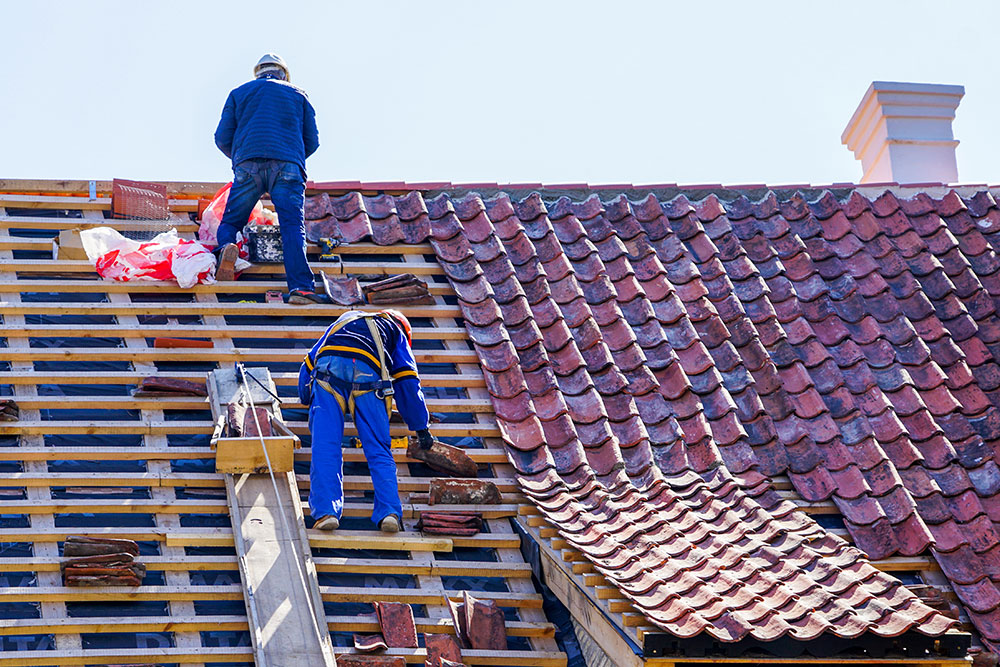
Preventing Future Problems
One of the most important aspects of roof repair is the ability to prevent future problems from occurring. Regular maintenance and timely repairs can extend the life of your roof, protecting your investment and preventing the need for costly replacements. By repairing minor issues before they escalate, you can avoid major roof damage that could diminish your home’s value.
Additionally, well-maintained roofs are more energy-efficient, which can reduce utility costs for homeowners. A new roof can help regulate indoor temperatures by providing better insulation and reducing the loss of heated or cooled air. In turn, this can create a more comfortable living environment and increase the home’s value by improving its energy efficiency.
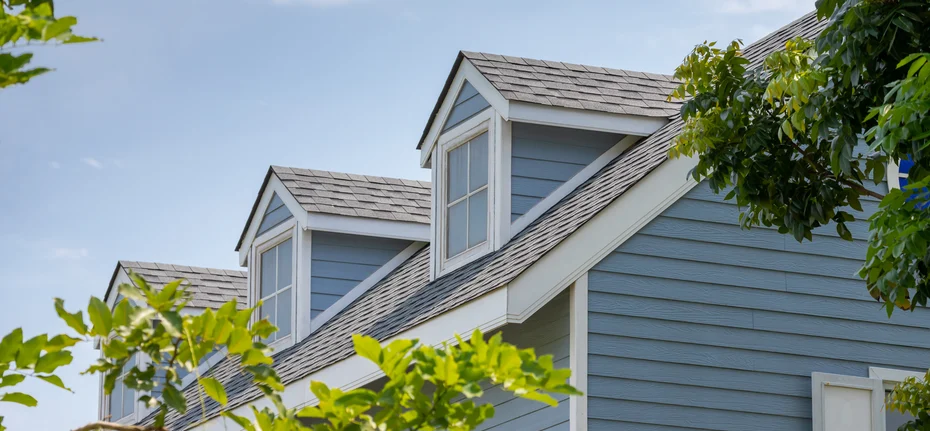
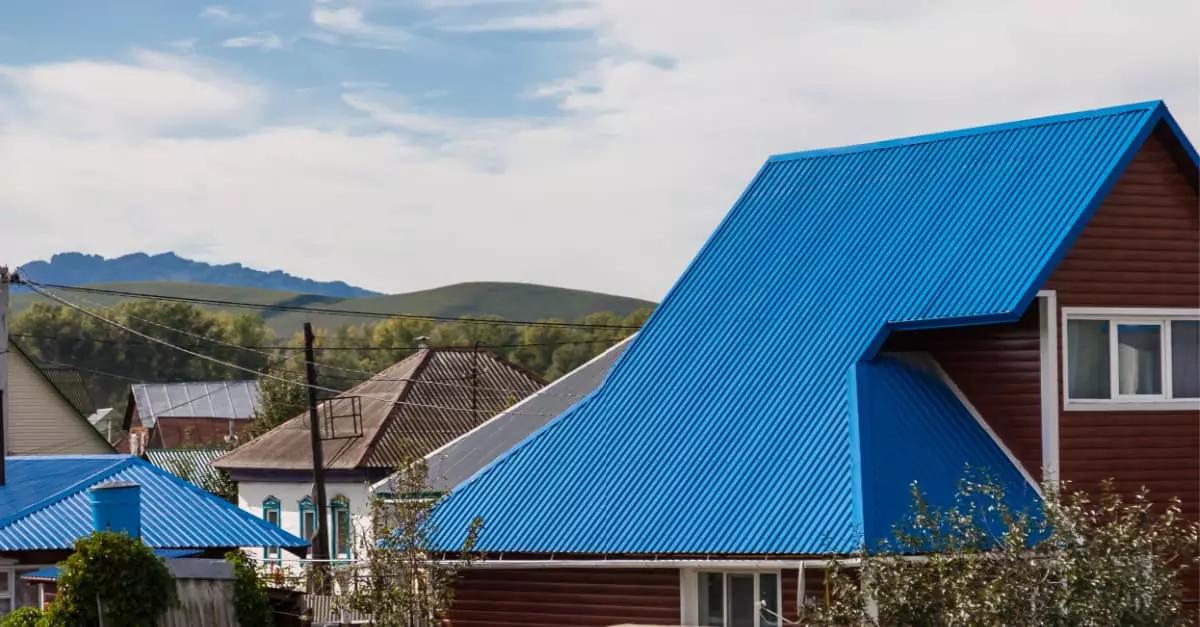
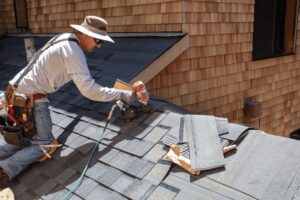 Flat Roof: Modern homes often embrace flat roofs, creating a sleek and minimalist look. Flat roofs can also be utilized as outdoor living spaces, such as rooftop gardens or patios.
Flat Roof: Modern homes often embrace flat roofs, creating a sleek and minimalist look. Flat roofs can also be utilized as outdoor living spaces, such as rooftop gardens or patios.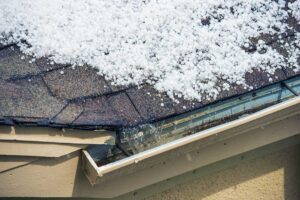 Hail damage occurs when small or large balls of ice fall from the sky during a storm. Depending on the size of the hailstones, they can vary in severity, leaving behind marks or causing cracks in roofing materials. When hail strikes your roof, it impacts the shingles or tiles, leading to a variety of potential issues, including leaks, compromised shingles, and weakened roofing systems. Identifying hail damage early is crucial because if left untreated, it can lead to more serious problems like water damage, mold, and structural instability.
Hail damage occurs when small or large balls of ice fall from the sky during a storm. Depending on the size of the hailstones, they can vary in severity, leaving behind marks or causing cracks in roofing materials. When hail strikes your roof, it impacts the shingles or tiles, leading to a variety of potential issues, including leaks, compromised shingles, and weakened roofing systems. Identifying hail damage early is crucial because if left untreated, it can lead to more serious problems like water damage, mold, and structural instability.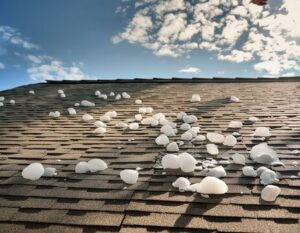 ven if you believe you’ve spotted hail damage on your roof, it’s always wise to call a professional roofing contractor to perform a thorough inspection and provide an accurate assessment. Roofs can sometimes hide damage that isn’t visible to the untrained eye. A professional will be able to spot the signs of impact that may not be immediately noticeable.
ven if you believe you’ve spotted hail damage on your roof, it’s always wise to call a professional roofing contractor to perform a thorough inspection and provide an accurate assessment. Roofs can sometimes hide damage that isn’t visible to the untrained eye. A professional will be able to spot the signs of impact that may not be immediately noticeable.